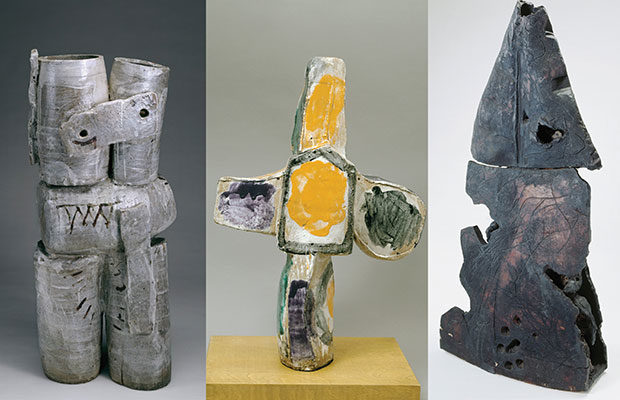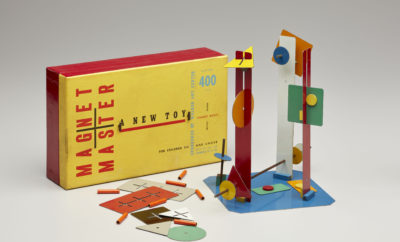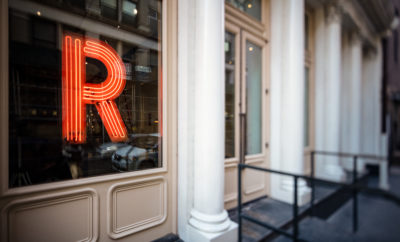 EVA HEYD PHOTO, ED WATKINS PHOTO, EVA HEYD PHOTO. ALL COURTESY MUSEUM OF ARTS AND DESIGN
EVA HEYD PHOTO, ED WATKINS PHOTO, EVA HEYD PHOTO. ALL COURTESY MUSEUM OF ARTS AND DESIGN
Exhibition
Clay is Just Thick Paint
IN THE ART WORLD there is little doubt that clay has arrived. If you’ve headed to Chelsea galleries, contemporary art spaces, or major museums over the last few years, you’ve likely bumped into artists using the medium: Ron Nagle, Jessica Jackson Hutchins, Nicole Cherubini, and Arlene Shechet, to name a few from a long list. Ceramics, it would seem, are everywhere. But, to fully understand this recent phenomenon you have go back to its roots—and those often begin with Peter Voulkos.
American studio pottery’s transformation into sculptural form was born in the fiery kilns of postwar Los Angeles, in a movement led by a Montana-born painter-turned-potter-turned- sculptor. From Peter Voulkos’s earliest days winning awards at ceramics expositions to his wildly innovative five year period at Otis in Los Angeles, to U.C. Berkeley, where he remained a charismatic teacher for more than a quarter century, critics and scholars have weighed in on his work. Yet, while Voulkos has been the subject of a multitude of exhibitions— both during his lifetime and since his death in 2002—the Museum of Arts and Design is the first to highlight what is arguably the artist’s most influential territory: pieces made between 1953 and 1968. The co-curators, Glenn Adamson, former director of the Museum of Arts and Design (and now editor-at-large for MODERN’s sister publication The Magazine ANTIQUES) and Andrew Perchuk of the Getty Research Institute, have charted many of these works in the first major exhibition on Voulkos seen on the East Coast in several decades.
“I have wanted to do a show about Voulkos since I was an undergraduate,” Adamson says, telling the story of how the artist’s work serendipitously sparked his own understanding of the field. While working as an intern at the Everson Museum of Art in Syracuse, New York, Adamson asked then curator Thomas Pich. Jr. to explain twentieth century ceramics. “He just took me over to a Voulkos and said, ‘Okay, let’s start here.’” Adamson sees the artist’s relevance today not only in an “aesthetic derived from Voulkos in the art world right now,” but also in approach. “The whole idea of taking production, process, and skill seriously has become much more current.” While clay was primary, Voulkos also used paint and bronze to express his vision and Adamson points to this “interdisciplinary energy” as a parallel with artistic practice today.
Voulkos’s story began in 1924. Born in Bozeman, Montana, to Greek immigrant parents, he fought in World War II. Upon his return, he studied painting and printmaking at Montana State College, until a required course his final year led to him to clay. An MFA quickly followed at the California College of Arts and Crafts. Voulkos then returned to Montana where, along with fellow ceramist Rudy Autio, he made functional wares at the newly formed Archie Bray Foundation. In a fateful move in 1953 he accepted an invitation to teach for three weeks at the avant-garde laboratory of Black Mountain College. There he witnessed choreography by Merce Cunningham and heard compositions by John Cage. A trip to New York soon followed, with Voulkos soaking in the Cedar Tavern scene of abstract expressionism. “His horizons expanded hugely, very fast,” Adamson says. A year later Voulkos was lured to California to establish the ceramics program at the Los Angeles County Art Institute (now Otis College of Art and Design), where he, along with his students—luminaries Ken Price and John Mason chief among them—would remake the rules of clay.
MAD’s exhibition begins with works from the precipice of this period—expertly made, functional vessels from 1953. Demonstrating what Adamson calls “material intelligence,” they illustrate Voulkos’s deep understanding of the medium. In a vase from 1955–1956, “you start to see him breaking apart the vocabulary of pot-making, so the handle is used in an expressionistic or a gestural way, rather than a functional way,” Adamson explains. Not only are the stirrings of abstract expressionism visible, but so are a range of other influences: Matisse cutouts, “sculptors that we don’t really think about these days like Fritz Wotruba,” and Picasso, whom Adamson emphasizes as a “particularly crucial figure.”
In 1956 Voulkos created his famous Rocking Pot, which has graced the cover of ArtForum (1978) and been the sole subject of an essay by critic Garth Clark, who described it as “simultaneously a pot, a sculpture, and a demented bird feeder.” Until the end of the decade, Voulkos’s forms surged in scale and innovation—from the hulking muscularity of Annon to USA 41’s boldly colored planes, made using both epoxy paint and glaze. Works from this period, including paintings, were shown in a 1960 MoMA “New Talent” exhibition, with his sculptures described by New York Times critic Dore Ashton as “virile images ranging from boulder-like clusters to complex open-and-closed pieces that have the dynamic rhythms of dances.”
With his departure from Los Angeles to U. C. Berkeley in 1959, Voulkos turned his focus to bronze in his search for ever-greater scale. However, notes Adamson, during this period the artist’s work in clay continued, shifting to smaller improvisations. The Breakthrough Years concludes with the artist’s solemn 1968 series of black works made in a single firing. In it, Voulkos established the sculptural vessel forms that foretell the rest of his career.
Although Voulkos largely expressed himself in clay, paint and metal—along with the physicality of dance and impressionism of music—were never far out of view. In an interview at age seventy-five he said, “Clay is just thick paint, and paint is nothing but thin clay,” holding tight to the interconnectedness that shaped his early breakthroughs. They continue to fascinate—and resonate—today. Accompanied by a deeply researched catalogue, Voulkos: The Breakthrough Years will be on view at the Museum of Arts and Design from October 18 to March 15, 2017, before traveling to the Smithsonian American Art Museum’s Renwick Gallery in Washington, D.C. madmuseum.org












